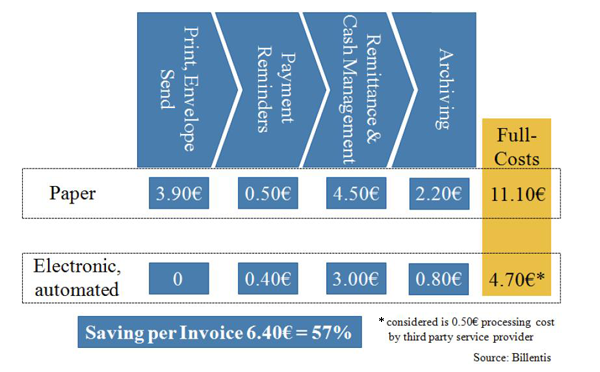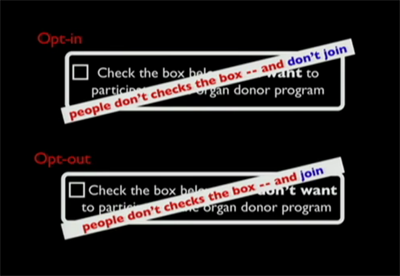There are many studies that explain the huge cost of paper-based invoicing and just as many that show the benefits of moving to eInvoicing (see image below).
Billentis, in its 2012 eInvoicing/eBilling report showed that the full cost of sending a paper invoice today is on average €11.10 vs. electronic, automated - costing the sender €4.70 per invoice (see image below).
| Saving potential for invoice/bill issuers (actual customer case) | |

The EU estimates that the mass adoption of electronic B2B invoices would save EUR40Bn per year, however, to date, eInvoicing has been the realm of large enterprises that have the capital and IT budgets to implement bespoke industry solutions.
For smaller organizations, one of the big stumbling blocks to widespread adoption is to standardize the format and delivery of the eInvoice. For SMEs, eInvoicing can be prohibitively expensive, particularly when trying to fit in with the requirements of a variety of customers, each with their own proprietary format and process.
The future of eInvoicing is getting brighter for SMEs
The latest developments in eInvoicing are changing this ‘big business’ paradigm.
Recently both Tradeshift and Cloudtrade (no connection) announced functionality that lowers the barrier to eInvoicing adoption for SMEs. Their solutions accept emailed invoices in PDF format and automatically extract the information for input into application eInvoicing data formats. Are these innovations set to change the face of eInvoicing for SMEs?
Using PDF eliminates eInvoicing barriers for SMEs
Companies have been using PDF eInvoicing for many years. Having the ability to send invoices to customers' chosen eInvoicing platforms in the same format, will vastly increase the adoption by these entities.
Convenience always wins the day
The premise is simple; if you can make eInvoicing or eBilling the easiest and most convenient option for either a business or consumer, then your invoice will be processed and paid quicker.
SME’s are already adept at generating and sending PDF invoices – having the ability to join the eInvoicing bandwagon without any change to existing processes will inevitably increase user adoption.
We’ll be keeping a close eye on things in this sector, and if you’re in a business that could benefit from eInvoicing, get in touch with us - let’s see what savings can be achieved closer to home.
